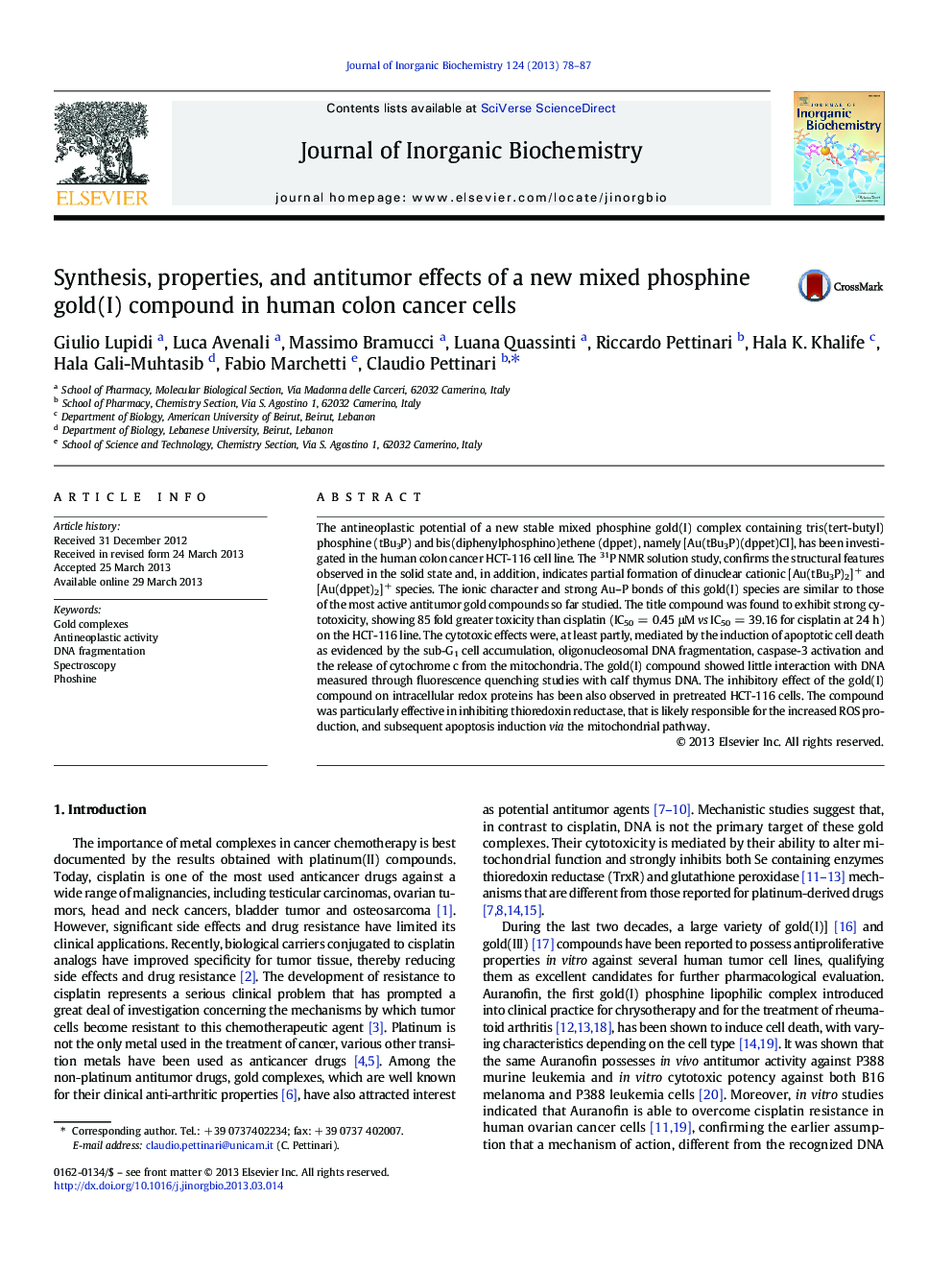| کد مقاله | کد نشریه | سال انتشار | مقاله انگلیسی | نسخه تمام متن |
|---|---|---|---|---|
| 1316788 | 1499463 | 2013 | 10 صفحه PDF | دانلود رایگان |

• Gold(I) phosphine compound showing strong citotoxicity
• Cytotoxic effects of gold phosphine complex mediated by the induction of apoptotic cell death
• Gold(I) compound effective in inhibiting thioredoxin reductase.
The antineoplastic potential of a new stable mixed phosphine gold(I) complex containing tris(tert-butyl)phosphine (tBu3P) and bis(diphenylphosphino)ethene (dppet), namely [Au(tBu3P)(dppet)Cl], has been investigated in the human colon cancer HCT-116 cell line. The 31P NMR solution study, confirms the structural features observed in the solid state and, in addition, indicates partial formation of dinuclear cationic [Au(tBu3P)2]+ and [Au(dppet)2]+ species. The ionic character and strong Au–P bonds of this gold(I) species are similar to those of the most active antitumor gold compounds so far studied. The title compound was found to exhibit strong cytotoxicity, showing 85 fold greater toxicity than cisplatin (IC50 = 0.45 μM vs IC50 = 39.16 for cisplatin at 24 h) on the HCT-116 line. The cytotoxic effects were, at least partly, mediated by the induction of apoptotic cell death as evidenced by the sub-G1 cell accumulation, oligonucleosomal DNA fragmentation, caspase-3 activation and the release of cytochrome c from the mitochondria. The gold(I) compound showed little interaction with DNA measured through fluorescence quenching studies with calf thymus DNA. The inhibitory effect of the gold(I) compound on intracellular redox proteins has been also observed in pretreated HCT-116 cells. The compound was particularly effective in inhibiting thioredoxin reductase, that is likely responsible for the increased ROS production, and subsequent apoptosis induction via the mitochondrial pathway.
The antineoplastic potential of Au(tBu3P)(dppet)Cl], has been investigated in the human colon cancer HCT-116 cell line: strong cytotoxicity and little interaction with DNA has been observed, the compound being effective in inhibiting thioredoxin reductase likely responsible for the increased ROS production, and subsequent apoptosis induction via the mitochondrial pathway.Figure optionsDownload as PowerPoint slide
Journal: Journal of Inorganic Biochemistry - Volume 124, July 2013, Pages 78–87